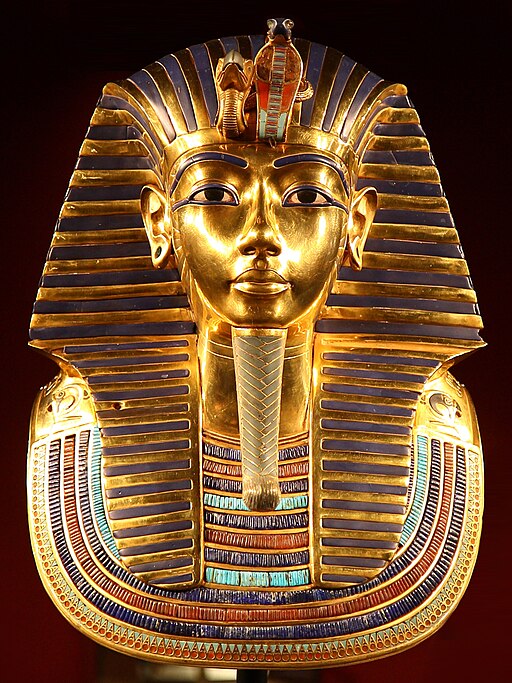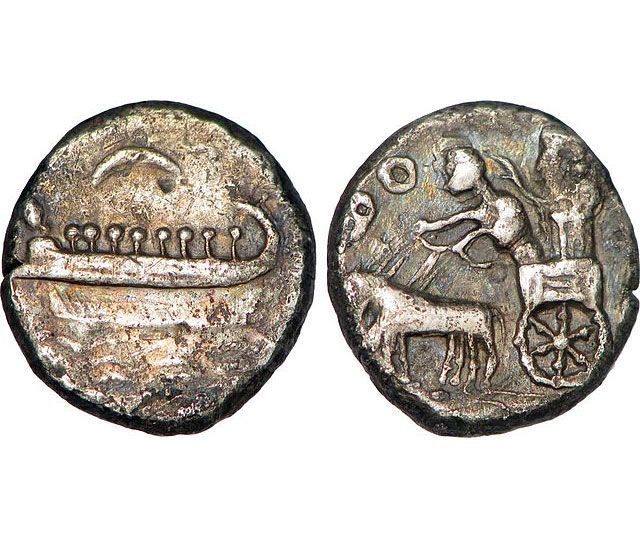Ancient People Used Known Terminology to Describe Objects
It is a common misconception that the hieroglyphs are pictures that represent ideas instead of the sounds of the language. An artifact is an object made by a human being.
They originated in the Late Neolithic Period c.

. The process of making a sculpture or other object by pouring liquid material such as clay metal or plastic into a mold and allowing it to harden thereby taking on the shape of the confining mold. The Indus Valley Civilisation is also known as the Harappan culture. According to archaeologists the term Culture is used for a group of objects which are distinctive in style and are generally found together within a particular geographical area and time period.
Artifacts are immensely useful to scholars who want to learn about a culture. Cylindrical earrings that pierce the earlobe. Pointed stone and bone objects have been discovered on many Middle Paleolithic archaeological sites such as Umm el Tiel in Syria Oscurusciuto in Italy and Blombos and Sibudu Caves in South Africa.
The Egyptian cubit the Indus Valley units of length referred to above and the Mesopotamian cubit were used in the 3rd millennium BC and are the earliest known units used by ancient peoples to measure length. People have always been fascinated by history and its mysteries and our subject for today is the 10 most famous artifacts from the Ancient WorldThese unique objects can be found almost anywhere. Most people refer to hieroglyphs when they speak about Egyptian writing.
Since many ancient peoples didnt develop a written language these artifacts are the only clues as to how they lived worked and played. Ancient pre-Columbian people living in the tropical lowlands of south-central Mexico in roughly the modern-day states of Veracruz and Tabasco. This mathematician and ancient astronomer used geometry and the noonmidday sun to calculate the size of the Earth.
The ancient Chinese are credited with having invented many things that we use today. These remains can be any objects that people created modified or used. In Britain before the widespread use of writing ancient people used stones to keep track of the motions of the Sun and Moon.
The unique artefact is one of several rare objects found last in Manduria when construction work exposed a Messapian tomb. Portable remains are usually called artifacts. 265 these are the most important inventions from ancient China in terms of western use today.
These points were probably used as thrusting or throwing spears by both Neanderthals and Early Modern Humans as long ago as 200000 years. Unlike modern-day magical phrases like say bippity boppity boo practitioners of magic in ancient Greek and Rome used spells to bind people up to different outcomes in sporting events. Pharaoh is actually a Greek word that is based on an Egyptian word that meant great house.
Though were dealing with antiquity roughly the Shang to the Chin ca. Men and not only females wore heels. Non-portable remains such as pyramids or post-holes are called features.
A French term that means advance guard Its a term that can be applied to artists and artworks as well as art movements as a whole. Nevertheless there is considerable evidence that ancient Greek and Roman philosophers discussed and theorised about the nature and value of aesthetic properties. From the 33 million-year-old stone tools found in Kenya to the ancient Egyptians treasure-filled tombs artifacts are defined as any objects made modified or used by a human anywhere in the world.
The tradition said that the higher the heel the higher position. Also known as the Formative period dating roughly from as early as 1500 BCE to about 400 BCE. System known as J2000 is being used while the 1302 and 6350 are coordinates similar to the.
When this word was first used it referred to the palace and its greatness not just to the ruler himself. He believed strongly in spherical-shaped celestial bodies and an immobile Earth and his ideas influenced astronomy for over 2000 years. It could be argued that ancient aesthetics is an anachronistic term since aesthetics as a discipline originated in 18 th century Germany.
They were known as kishib in Sumerian and kunukku in Akkadian and were used by everyone from royals to slaves in the transaction of business and sending correspondence. High heels were actually in in 3500 BC as they were used to separate high class people from the low class who walked barefoot. However later in Egyptian history the title pharaoh meant ruler.
Ancient Egypt boasts one of the largest collections of antiquities and monuments in the world. While the shapes of the hieroglyphs are indeed taken from real or imaginary objects most of them are used for their phonetic value. Archaeologists use artifacts and features to learn how people lived in specific times and places.
It is usually a stand-in phrase for art that is experimental unusual and forward-thinking. If you are looking at a painting likely you are looking at an object made with the use of a brush. The best known of these is Stonehenge which is discussed in Earth Moon and Sky.
Ancient cultures saw patterns in the heavens that resembled people animals or common objects. Cylinder seals were impression stamps often quite intricate in design used throughout Mesopotamia. The relic is known as a guttus which is a vessel with a narrow mouth or neck from which liquids were poured.
The units of length used in ancient India included the dhanus or dhanush bow the krosa cry or cow-call and the yojana stage. The term can also be used to refer to the remains of an object such as a shard of broken pottery or glassware. We still find some of the great stone circles they built for this purpose dating from as far back as 2800 BCE.
Artifacts include art tools and clothing made by people of any time and place. Pharaoh is the term we use today to describe the rulers of ancient Egypt. One of the oldest hair combs belongs to an Egyptian king and is 5500 years old.
The art of making objects of clay and firing them in a kiln. They were used for wine and other drinks but in this case the guttus was used for feeding a baby or young child. 7600-6000 BCE in the region.
Artifacts include tools clothing and decorations. It also had an immense cultural impact on surrounding ancient and modern civilizations spanning topics including language mathematics and architectureHowever ancient Egypt was also known for its wide variety of inventions that are still used today. Discuss the terms places and times of Harappan culture.
Wares of earthenware and porcelain as well as sculpture are made by ceramists.

Pin On Wall Editions Art Posters

Ancient Alphabets Words To Describe People Ancient Languages

Seven Latest Tips You Can Learn When Attending Nonmaterial Culture Definition Nonmaterial Culture Definiti Culture Definition Culture Meaning Problem Of Evil

A History Of The Viking World In 10 Extraordinary Objects Art The Guardian

The Lion Man Of Hohlenstein Stadel Paleolithic Art Prehistoric Art Ancient Art

The Story Of Cinnabar And Vermilion Hgs At The Met The Metropolitan Museum Of Art

Adjective Posters Adjectives Student Notebooks Comparative Adjectives

Ancient Egypt Historical Replica 3 Part Cards With Objects Ancient Egypt Egypt History

Everything You Ever Wanted To Know About The Rosetta Stone British Museum Blog

Ceramics Vocabulary Terminology Handout Ancient Greek Words Greek Words Ceramics

List Of Descriptive Words For An Art Critique Or Turn It Into Game Where Groups Have To Come Up With As Many Word Art Analysis Art Critique Descriptive Words

Pin By Peter Reydon On Geschiedenis In 2021 Archaeological Discoveries Ancient Ancient Mysteries

Ancient Artifacts Virtual Tour Joy Of Museums Virtual Tours

Terminologie 1 Dune Book Frank Herbert Dune
Paint Like An Egyptian The Metropolitan Museum Of Art

4 Shocking Facts About Culture Definition Sociology Culture Definition Sociology Culture Definition What Is Culture Culture
Teaching History With 100 Objects The Standard Of Ur

Making Cents Of Currency S Ancient Rise History Smithsonian Magazine


Comments
Post a Comment